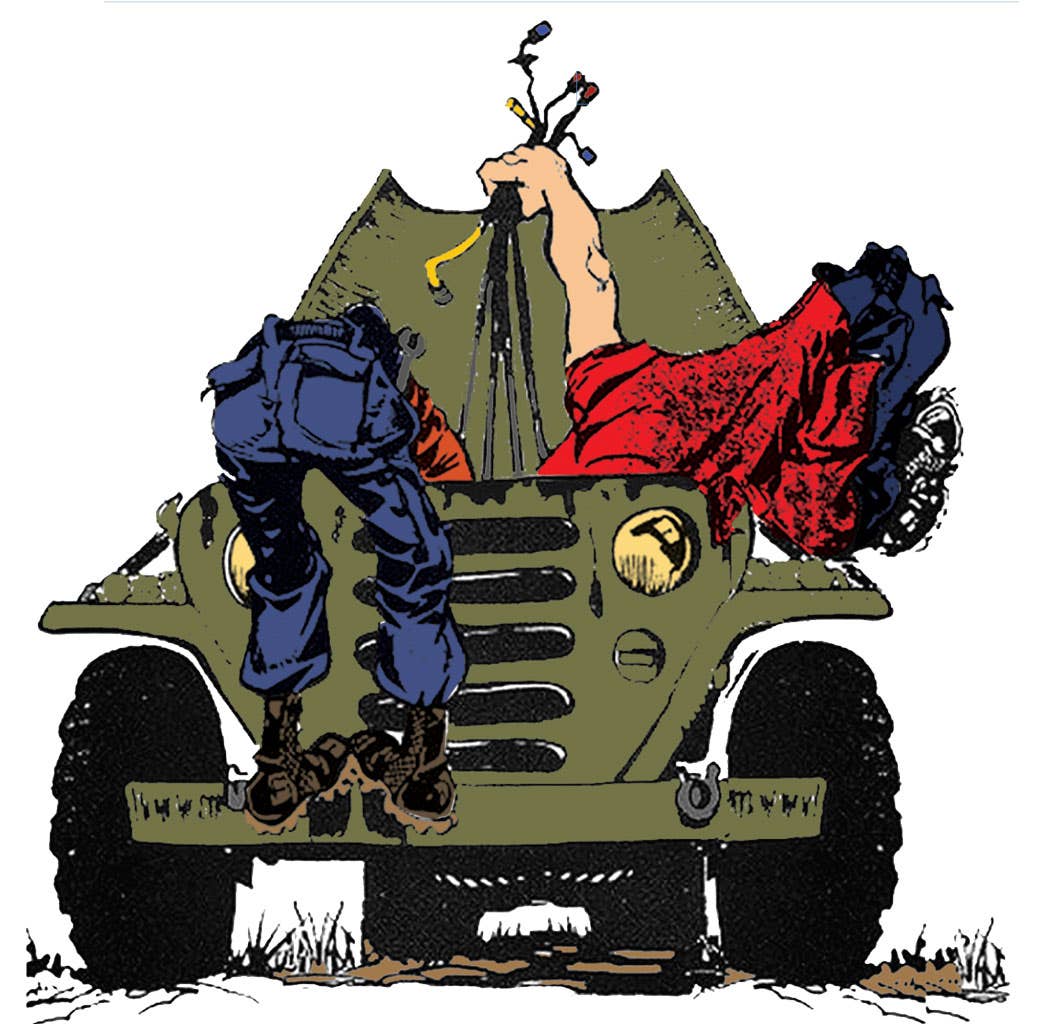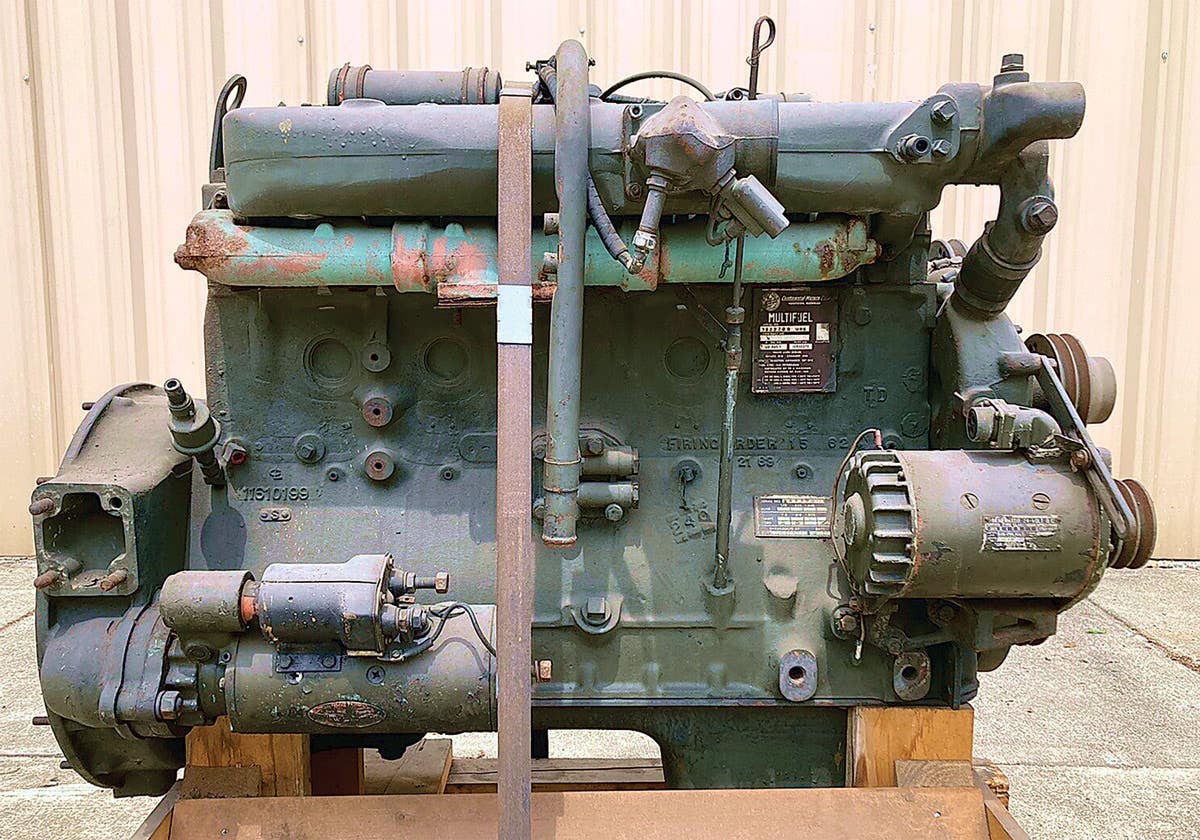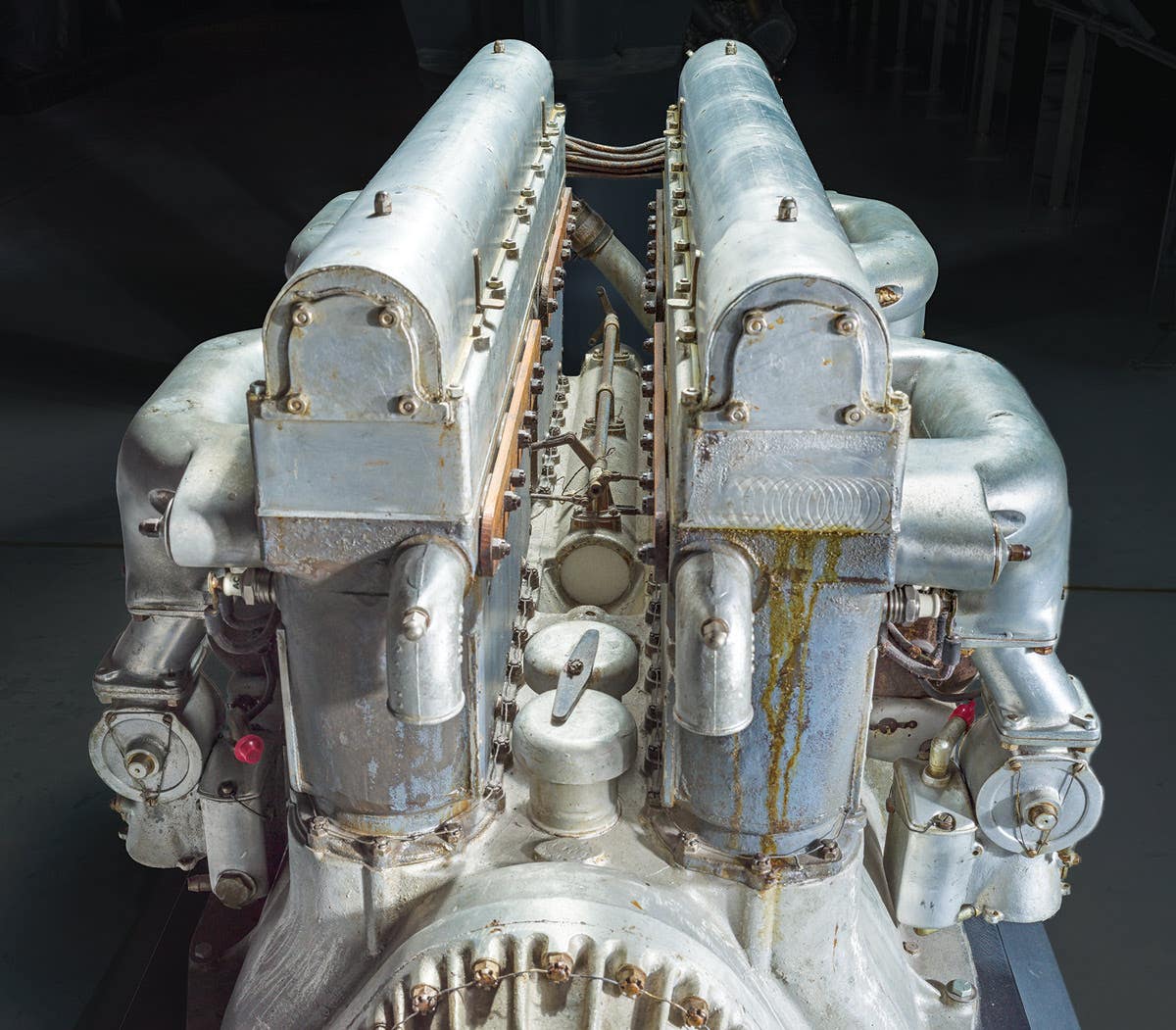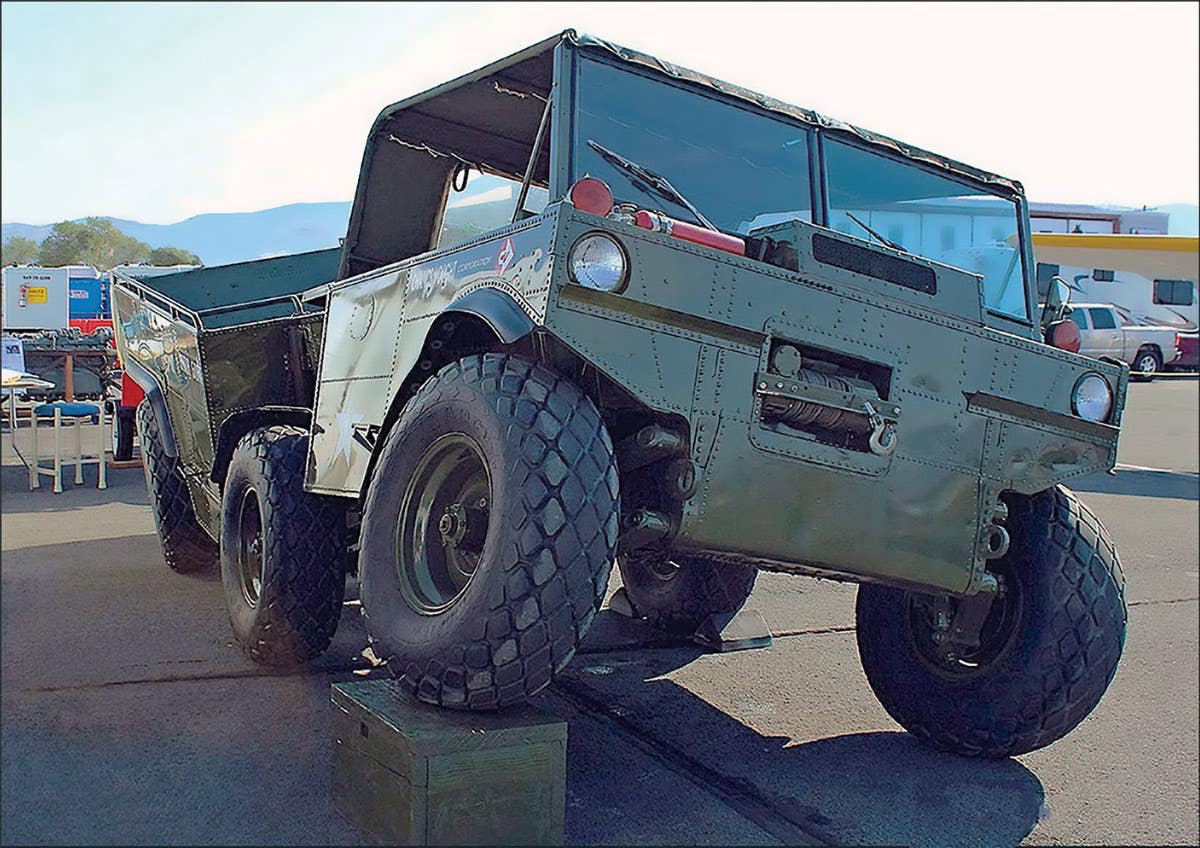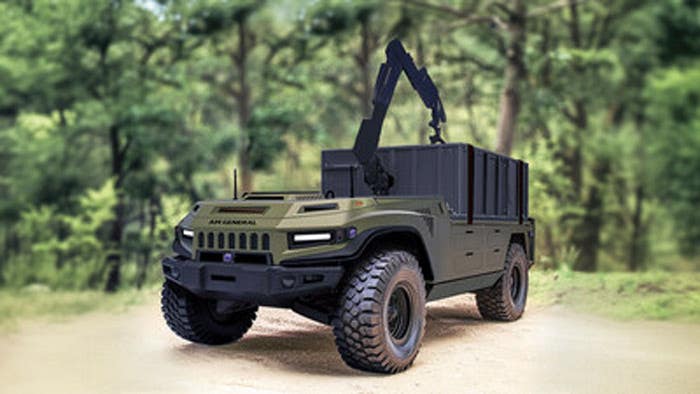Wisconsin-built, UK-driven: FWDs Still Rolling!
by Scott Smith The Four Wheel Drive Auto Company, more often than not known simply as Four Wheel Drive or FWD, was founded in 1909 in Clintonville, Wisconsin. The company…
by Scott Smith
The Four Wheel Drive Auto Company, more often than not known simply as Four Wheel Drive or FWD, was founded in 1909 in Clintonville, Wisconsin. The company name wasn’t originally the one which would become well known around the world over the next 100 years, with originators Otto Zachow and Williams Besserdish first naming FWD the Badger Four Wheel Drive Auto Company. After concentrating on the motorcar industry, the success of four-wheel drive vehicles in early military tests prompted the company to switch its attention to trucks – successfully helping to supply demand for both US and allied armed in both world wars.
Two such vehicles which they produced during the Second World War period were the SU-COE and HAR-01. Both vehicles were shipped in good quantities overseas as part of the lend-lease agreement between the allied armies during the conflict.
Despite a good number of vehicles coming over, the sight of one some 70 years after being first ordered is somewhat rare. For some reason FWDs haven’t survived in the numbers that other vehicles have and there are now only a handful left on this side of the pond.
One person who is lucky enough to have not one but of these magnificent machines is Roger Staddon of Tisbury, Wiltshire, who along with his good friend Derek Tucker and his son Paul make the effort to display the SU-COE and HAR-01 of 1942 vintage. These vehicles are certainly very rare with their believed to be just one other HAR-01 left in the UK. The SU-COE is just as rare with their being less than a handful of these machines in working order.
Not long after WWII, a number of MOD surplus sales took place with many vehicles such as these FWDs being placed in grand auctions with the vehicles and other mechanical instruments no longer needed by the armed forces, and this is where Roger would first stumble across the FWDs. This particular sale took place not far from where the vehicles now reside being held at Benther Wood, Winterslow on Salisbury Plain.
As Roger explained, there was a wealth of items for sale and the FWDs weren’t the only vehicles which they picked up at the time, “There was a terrific range of stuff for sale though and it didn’t take them long to knock down the 5,000 trucks which were on offer. There were all sorts to choose from as a good lot had been towed in and they were all in different states of repair. We brought a number of different machines from the sale including a DUKW!”
Many of the vehicles that were on offer were only a couple of years old, carried low mileage and had relatively short working lives. All this meant that there were a number of bargains on offer, with bulk buying being the order of the day, “They were fantastic buys really considering how little work they had done. A lot of the showman brought them as well, people such as Bertram Mills and Chipperfields Circus. I witnessed with my own eyes five of these vehicles at a time all drawbard up together and being towed away by one vehicle which the showmen used to own. It was a wonderful sight to see.
“We brought these two in the winter of 1947; it was a terrible winter with lots of ice and snow. What our trouble was is that we only had light vehicles for towing, so we got one of the FWDs going and we were able to tow the rest home!”
Once purchased, the vehicles were put straight into work in the timber trade at the family timber business in Tisbury, Wiltshire and at Crewkerne in Somerset as Roger explained, “We brought three of these SU-COE’s and converted them from their military spec into mobile cranes, which were able to pick up six tonnes. We used them extensively until around 1990.
“We also put snow plows on both of these and they were part-owned by Wiltshire and Somerset County Council. During the winter of 1962/63 they worked around the clock for weeks and weeks upon end clearing the snow off the roads. That was quite a good test for them really!”
Powered by their six cylinder Waukesha B.Z engine’s and with their five-speed gearboxes these ex-MOD beasts were something completely different for Roger and other timber hauliers around the country. With Roger explaining the type of machine that they had to use before these vehicles came onto the market, “In the early days the civilian stuff were called REO Speed Wagons and they were about 15 hundredweight. Only we were continually overloading them with timber and then we wondered why the tyres were always going!
“We had Bedfords and Chevies, a lot of old fashioned stuff. But then these came along and we were in heaven really as they were rugged, had a beautiful braking system on them, the gearboxes were low ratio and of course four-wheel drive – you could go almost anywhere – they could get stuck sometimes, but you could always pull yourself out. They were cracking vehicles to drive and own.
“They worked extremely hard during their time with us. You couldn’t wear them out really. They were fantastic vehicles to use in the role for which we used them. You have to remember that it was all original stuff from the Second World War which was being used some 40 and 50 years later.”
The main task for the HAR was the unloading of timber using its powerful Garwood winching system which was situated just behind the cab. Rather unusually the body of the vehicle was retained, with many usually being replaced by cranes; however this also meant it could be pressed into other roles around the yard, “This one was used in more of a cargo body role than any others. In fact that is the cargo body on it now which was on it all those years ago and it also has a winch on it between the cab and the body.
“We used it for winching work mainly when doing round timber jobs, pulling out and unloading in the yard. Because we could winch the whole lard off on the artics, by putting the rope around the whole load and taking it all off – it was quite good at doing that!” Roger added.
After nearly 20 years of hard work, the HAR-01 was parked and sheeted up in a corner of the yard in the early 1960s. Unlike many vehicles which passed through the family business it wasn’t disposed of straight away as there was always a feeling that this machine was something special as Roger explains, “The HAR, I always wanted to have a go at it that’s why I never got rid of it, unlike the other vehicles which once we had managed to get a good use of them we let them go.
“I always thought it was pretty unique as I had never seen another anywhere before. While the SU-COE worked pretty much right up until the end so that’s why we kept that one.”
The thought to restore the HAR had always been in the back of Roger’s mind, but it wasn’t until he retired in the mid-1990s that he could even realistically think about restoring the vehicle back to its former glory. So along with good friend Derek it was decided to finally remove the sheet which had hidden the HAR for nearly 30 years.
As Roger explained things didn’t look promising at the start though, “When I retired in 1995, I was 73 and we shut the two mills down which we had. This HAR was in the yard sheeted down, and I kept thinking to myself one day I’m going to have a go at it.
“One day I did take the sheet off and the doors fell off; the windows were out it looked like being a colossal job. It took just over ten years on and off to do it. Derek came in and did a lot of the mechanical work and also helped a lot with the body work on it.”
The SU-COE has quite a different story as Roger did sell it on for a short while, before re-acquiring the vehicle at the start of the millennium.
“The SU-COE was one of ours originally but it was sold to a young man called Keith Mullins in 1997, who Derek worked with, sadly he passed away before he could finish restoring it though. So we brought it back in 2001 and it took us around four years to restore it.
“There was no cab or body on it, he had tried to put a diesel engine it but it didn’t really work so we got the petrol engine and stripped that out and put all that back in.
“We carried on and rebuilt the cab as well at home in the garage – a lovely hobby to have! I had plenty of timber at home which I had originally saved for the other one, so that all came in handy when restoring the SU-COE.”
We asked Roger which particular part of both vehicles took the longest to complete in the restoration process, “The cabs were long jobs on both vehicles. They started to come unstuck as the timber got a bit wobbly meaning we had to rebuild all of that. But the engines we got reconditioned at an engineering firm, which cost a bit of money.
The reason it cost a lot was that they couldn’t get any spares for this type of engine so they had to make and modify a lot of things from British vehicles such as Leyland’s and that sort of stuff.
“We had to find tires as well which took a while. We kept going around to shows though and picking up different bits which all helped. Over the years which we had them we had accumulated a number of spares though as other timber merchants had SU-CO’s as well and when they finished they said do you want some spares and they brought them to us and dumped them. So we had a lot of spare bits and pieces lying around when it came to the restoration.”
With his families long history in the timber haulage business it is perhaps a surprise that the FWDs weren’t restored back into their civilian working guise once again. As Roger explained though, these vehicles are virtually one offs when it comes to seeing them restored in their military spec – so for him there was only one paint scheme that they could carry once again, “I thought they were unique vehicles. You see a lot of GMCs, Dodges, Bedfords and hundreds of Jeeps but these are totally something different.
“Plus we know that there is believed to be only one other HAR existing in this country while there are only about three or four SU-COE’s. But the main thing is that they aren’t original, so that is what we have tried to do here to make take it back to how they were during the War.”
Thankfully during the restoration process Roger and Derek were able to find the original markings beneath the layers of paint, thus being able to apply them to the finished articles which you see before you. From this they have managed to find out exact history of these two rare FWDs and thankfully bring them to our attention today, “The HAR was used for towing radar trailers mainly, but it was also used for smoke generation on airfields. The next model up was used for snow blowing duties on airfields. While the SU-COE was used mainly for transporting troops and other equipment around with its cargo body, while it would have also been used as an artillery gun tractor.”



